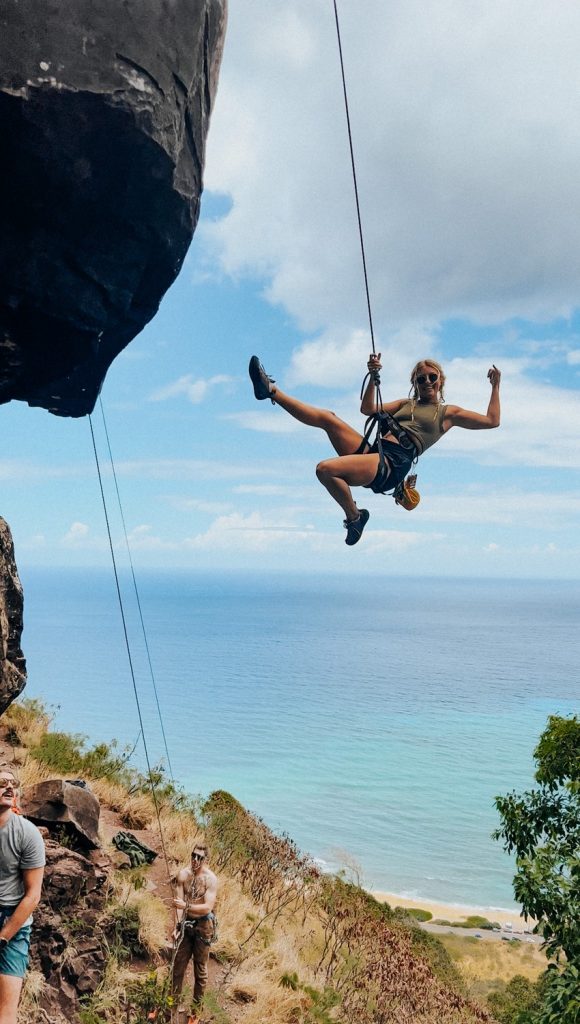Katherine Gail Kreidle is a yoga instructor and wellness advocate. In the following article, Katherine Kreidle discusses how getting out of the house and heading outdoors can transform one’s physical fitness and mental wellness.
Exercise is always good for the brain and the body, but outdoor exercise takes self-care to new levels.
It’s called “green exercise,” and doesn’t come attached to a crowded gym or monthly member fees. There aren’t any group classes or stationary bikes or treadmills.
However, exercising outdoors is increasingly showing its capability to provide greater mental and physical health benefits than inside exercise.
Katherine Gail Kreidle Discusses Going Green
Green exercise is generally any form of exercise done outdoors.
Katherine Gail Kreidle says that this includes walking, running, rock climbing, free diving, gardening, yoga, cycling, and sports such as soccer, baseball, football, tennis, and basketball. It can be done in a variety of outside settings, including parks, the woods, the beach, the lake, or one’s own backyard. Green exercise can be done by those of all ages and abilities.
Some describe green exercise as ecotherapy or nature therapy, backed by numerous findings on nature’s importance in human well-being. One study found that walking for just 15 minutes outside can clear the mind.
Physical Benefits of Green Exercise
Exercising is essential to maintaining good health; outdoor excising may make it a bit easier.
Katherine Gail Kreidle notes that first, outdoor exercise in the sun is the perfect way to get one’s daily recommended intake of vitamin D. A study of spinal surgery recipients found that those patients with rooms on the sunny side of the hospital said they felt less stress, less pain, and needed less pain medications than those with rooms with less natural sunlight.
Neurological green exercise studies have found that those who took short walks outside saw greater improvement in concentration and memory than those who only took brief walks inside.
Katherine Gail Kreidle also notes that research suggests tough exercise can feel easier and motivation is bolstered when one exercises in a natural setting. While modern treadmills can mimic any type of environment, one study found that hiking outdoors for three hours took greater exertion than hiking on a treadmill with variable inclines.
Gyms are often responsible for people catching colds, because members are almost always in close proximity to other gym members and staff.
Exercising outdoors, however, greatly reduces the chance of picking up a communicable illness and can be a much better option when feeling a little under the weather.
 Mental Health Benefits
Mental Health Benefits
Katherine Gail Kreidle says that fresh air isn’t just good for the body, it’s good for the soul as well.
In fact, exercising outdoors can have a significant impact on one’s overall mental health. Research has steadily shown that doing so has the ability to reduce stress, anxiety, and depression symptoms. Outdoor exercise typically improves moods, induces relaxation, and improves cognitive function.
Katherine Gail Kreidle says that Vitamin D production from sunlight exposure, even for only 20 minutes, is also able to improve one’s mood. Vitamin D deficiency is also commonly seen in those with severe mental illnesses.
Just five minutes of outdoor exercise has been shown to improve self-esteem, with natural settings like greenery and water enhancing the impact even more. Interestingly, compared to high-intensity outdoor exercise, low or moderate outdoor activity has been shown to lead to better self-esteem improvement.
Outdoor exercise is considered a good way to lower one’s general sensitivity to anxiety, reducing tension, and increasing mental energy. It can even create new neurons in parts of the brain that have a role in lowering anxiety levels. There’s also a quick mood boost after outside exercise, thanks to the brain’s release of serotonin and endorphins to stabilize moods and help people overcome pain faster.
Katherine Gail Kreidle also reports that sleep boosts both physical health and mental health. A regular schedule of exercise in the great outdoors helps to set up a regular sleep pattern and increase sleep efficiency, or how well one sleeps over time. Outdoor exercise in the morning light may also stabilize one’s circadian rhythm, leading to sleeping more soundly.
Social Impact
Katherine Gail Kreidle explains that green exercise may also provide a venue for people seeking social interaction. In most cities, one can find many fitness classes that are held outdoors in groups. Having a supportive network of peers also greatly increases the chance of finding a community that will hold one accountable for meeting their physical health goals.
The social factor in outdoor exercise may also help with mental health conditions. Studies found that green spaces are ideal settings for people to address major physical and mental health concerns.
Conclusion
In closing, embracing outdoor exercise is a profound investment in both physical and mental well-being. The natural world offers a sanctuary for our bodies to thrive and our minds to find solace. Whether it’s the invigorating rush of fresh air or the symphony of nature’s sounds, every outdoor workout rejuvenates our spirits.
By choosing the open embrace of parks, trails, and green spaces, we not only elevate our physical fitness, but also nurture our mental clarity, resilience, and sense of connection to the world around us. So step outside, breathe in the vitality of the natural world, and let every stride be a testament to the transformative power of outdoor exercise. Your body and mind will thank you for it.



 Mental Health Benefits
Mental Health Benefits


